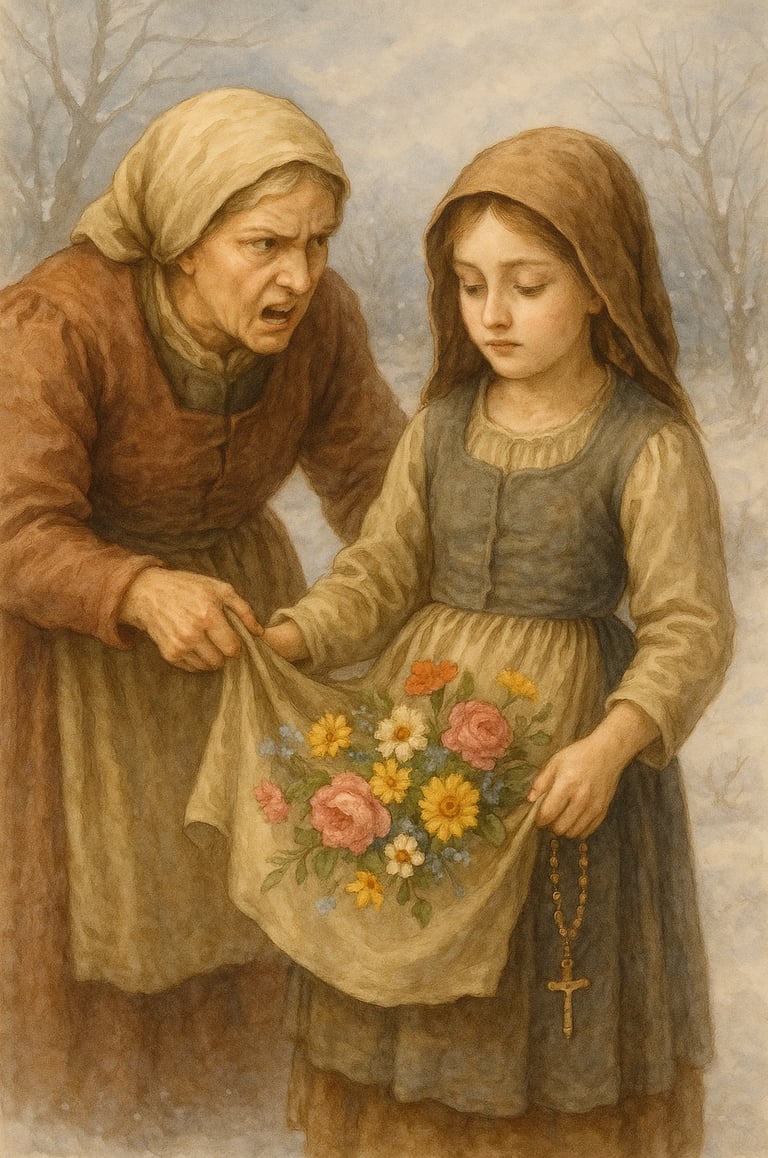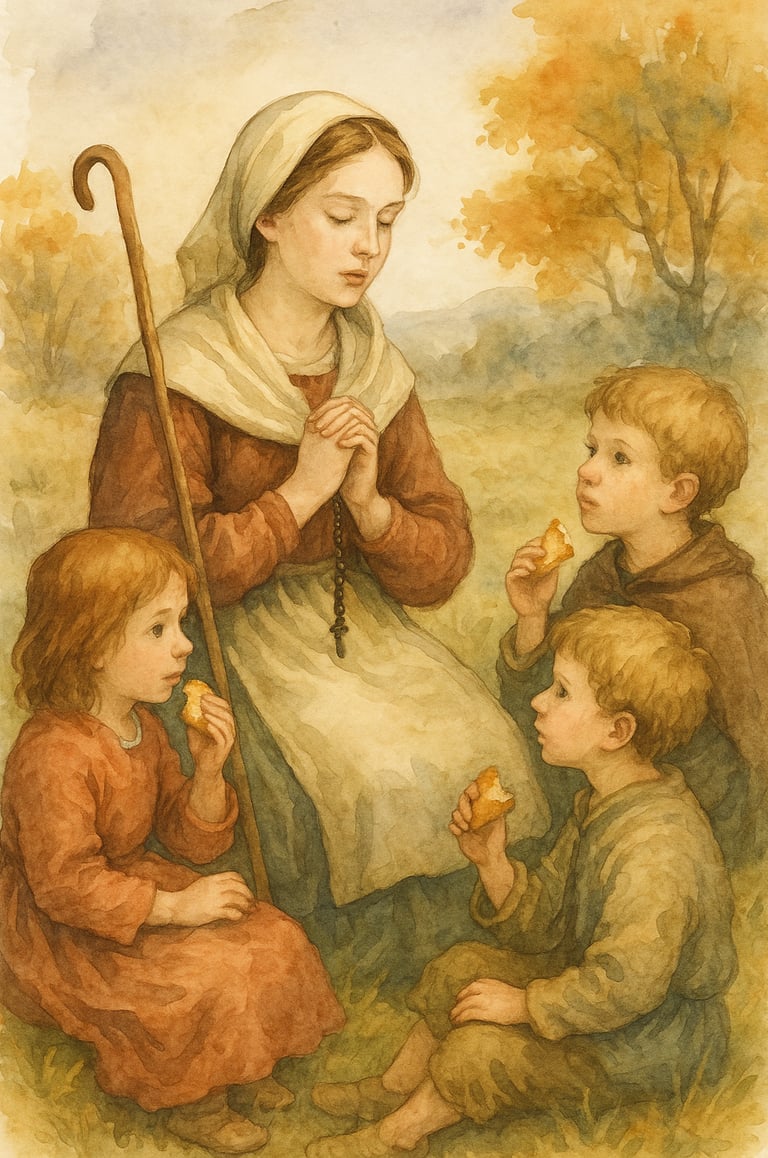St. Germaine Cousin
Heaven's Cinderella
Halo & Light Studios
6/15/20252 min read


Click here for a reel of Daily Dose of Saints and Faithful Art:
https://youtu.be/U4jsGWEvEu8?si=JjffdSlTCO0Yp3Cq
Born in 1579 in rural Pibrac, France, St. Germaine Cousin lived a life hidden from the world but radiant before God. Marked by suffering from a young age, she bore a withered arm, chronic illness, and the cruelty of her own stepmother. Forced to sleep in a barn and tend sheep in isolation, Germaine endured rejection and abuse—but never grew bitter. Instead, she offered every trial to God, transforming her suffering into sacrifice and silent love.
Though poor, illiterate, and overlooked by society, Germaine possessed a soul of astonishing grace. She faithfully received the Holy Sacraments at Mass and meditated on the mysteries of the Rosary while watching over her flock. With just these two spiritual anchors—the Eucharist and the Rosary—she rose to great sanctity, growing in holiness without books, education, or praise.
She is a model of humility, long-suffering, and forgiveness—virtues rarely celebrated in our world today. What would our culture look like if young girls admired saints like St. Germaine Cousin—models of purity, humility, forgiveness, and unwavering faith—instead of idolizing fleeting celebrities who often embody vanity, rebellion, and moral confusion?
Too many public figures today do not know the love and mercy of God, yet they are exalted as role models. Their influence often contributes to the decay of culture, distorting the meaning of womanhood, promoting self-indulgence over self-sacrifice, and celebrating lifestyles that undermine the dignity of the human person and the sanctity of the family.
St. Germaine offers a radically different vision: one of hidden holiness, quiet strength, and heroic virtue. She teaches that suffering can be sanctified, that love can thrive in silence, and that true beauty is born from grace, not glamour.
If the next generation of girls were formed by saints like her—rather than by the algorithms of pop culture—we would see a renewal of modesty, compassion, fortitude, and faith. Families would be strengthened. Vocations would blossom. And the dignity of womanhood would be restored in its fullest, most radiant form.
Despite her harsh treatment, St. Germaine forgave her persecutors. She became a quiet evangelist in her village, teaching local children about Jesus and sharing her meager food with those poorer than herself. Her purity and kindness were noticed by few, but cherished by Heaven.
Her sanctity was revealed in a miraculous moment when one day, she was falsely accused of stealing bread. When her apron was opened before witnesses, it held not bread—but fresh summer flowers, blooming in the dead of winter. It was a miraculous sign of divine favor upon her hidden holiness.
She died at just 22 years old, and her incorrupt body, discovered years later, stands as a quiet affirmation of the glory hidden in suffering.
Canonized in 1867 by Pope Pius IX, St. Germaine Cousin remains a powerful intercessor and inspiration, especially for the disabled, abandoned, and those unjustly treated.
St. Germaine is not irrelevant—she is urgently needed. She reminds us that even the most overlooked soul can become a beacon of light when united to Christ.
St. Germaine shows us that true beauty is found in purity, and that greatness is measured not by fame, but by fidelity to God.


